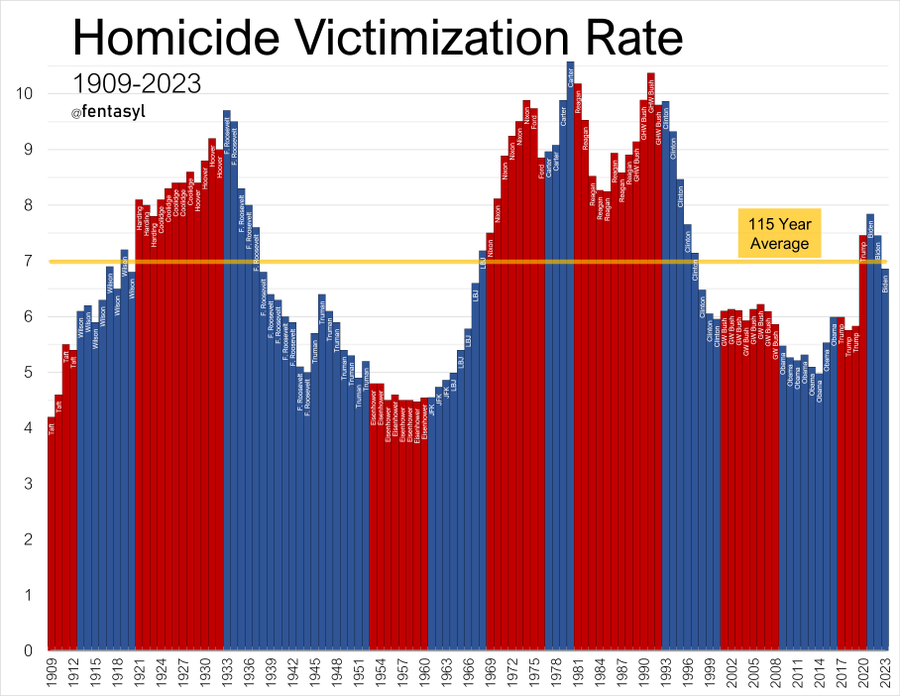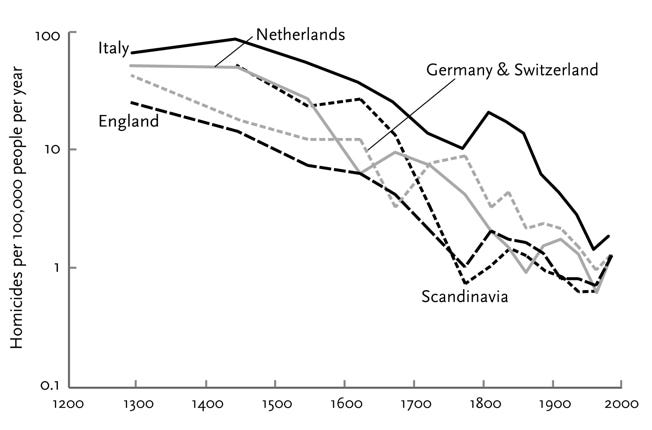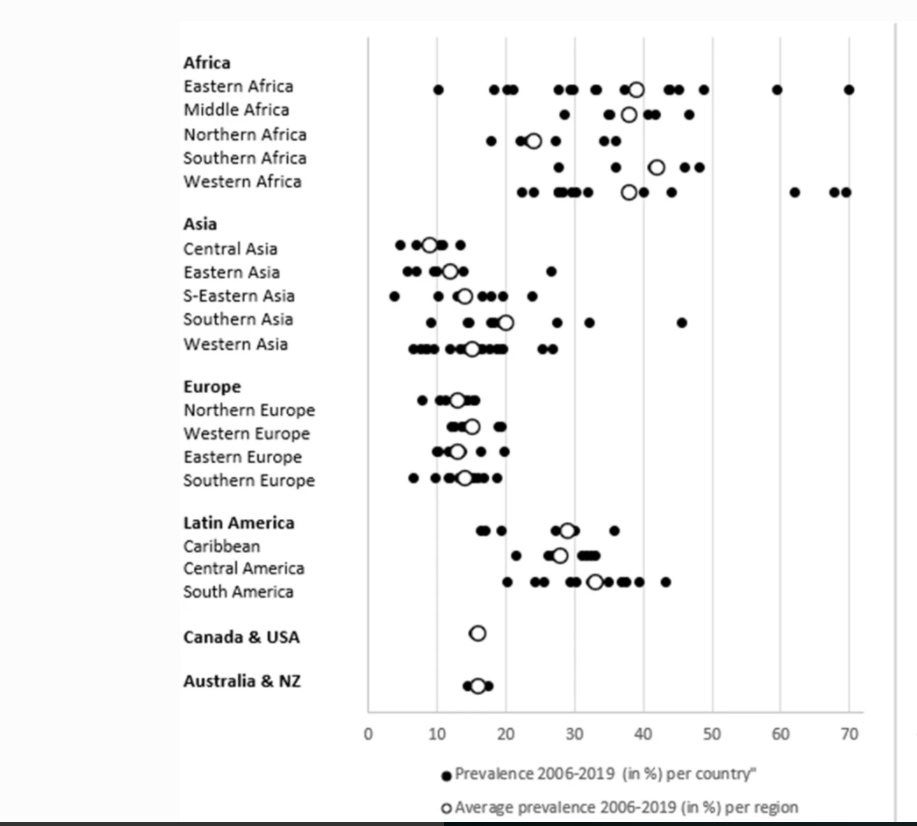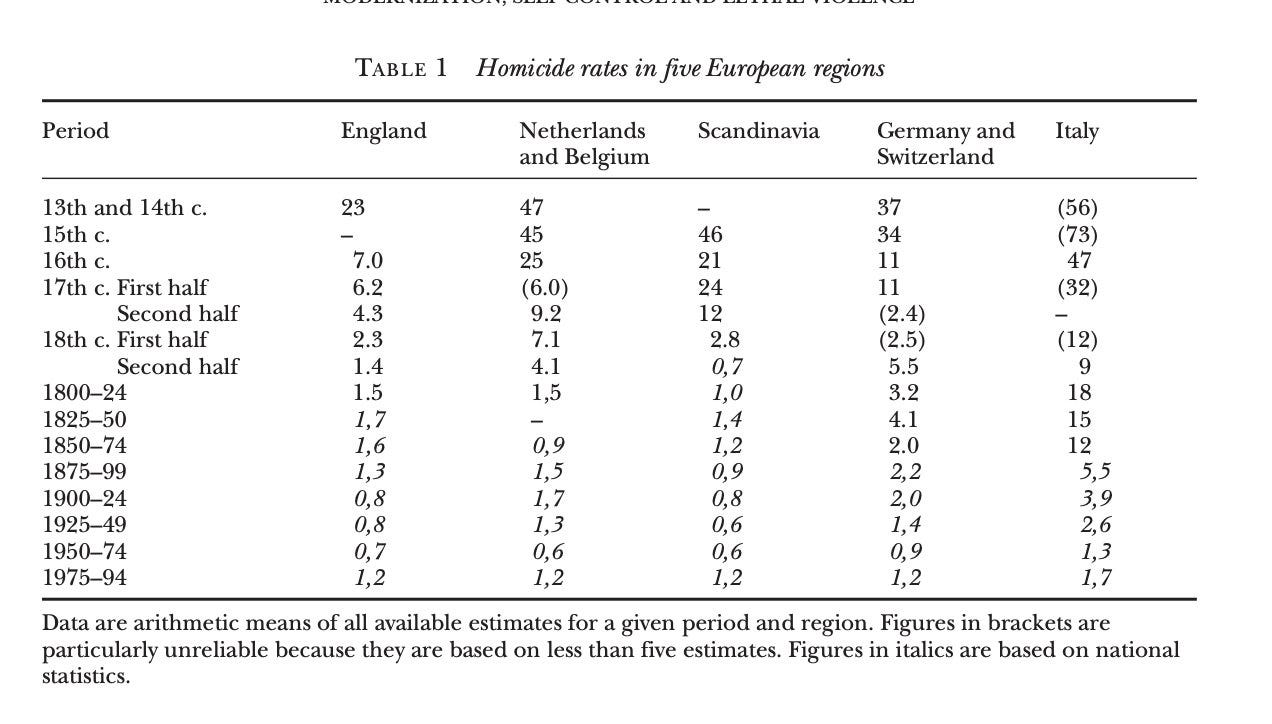Murder As Measuring Stick
How medicine has masked a colossal rise in crime and disorder since the 1960s
Murder As Metric
Comparing crime rates between countries or across time is hard. Definitions shift, unpunished crimes go unreported, quality of statistics varies, and what constitutes a crime changes. The exception is murder: both the definition and reporting are consistent across countries and eras, and hence murder rates are often used as a proxy for crime rates.

Murder rates as a function of medicine
However, while insulated from reporting and definition shifts, the murder rate is very strongly affected by medical care, meaning both improved techniques and better access. A fatal injury in 1960 might be easily treatable today. To put concrete numbers on it: if aggravated assaults in the United States had been as lethal in 1999 as they were in 1960, the murder rate would have been 3.4 times higher (Harris et al 2002)!

That’s huge, especially considering that 1960-1999 is not that long a period in historical terms. This already massive difference would be even bigger over a longer time scale. Closer to the present, both medical techniques (such as the rise of minimally-invasive surgery) and transportation/communication technology (such as smartphones) have improved significantly in the 21st century. And imagine trying to use murder rates to compare crime levels between the present and before antibiotics (not widely used until World War II) or germ theory.

Taking this into account, I would estimate that a murder today represents 4-5 times as much crime and disorder as a murder in 19601, and probably 10 times as much as a medieval murder, with the early 20th century somewhere in between. As such, today’s murder rate being comparable to that of 1960 represents a colossal failure of justice, with overall crime and disorder being several times higher than it was two generations ago.
Why does this matter? The major costs of crime are not from murder, because murder is rare and highly concentrated among a few demographics. They are from more common crimes like assault, mugging, burglary, housebreaking, and rape, as well as general public disorder (both directly and in the huge costs people pay to avoid it). Murder is a reasonably good proxy for these things in the short term because all crime and disorder tends to go together. But the ratio of murder to crime and general disorder declines quickly over time. A murder rate of X even in the recent past corresponds to a lower crime rate than a murder rate of X today. Discourse about crime and its prevalence needs to take this into account.
International Comparisons
The ratio of murder to crime and disorder doesn’t just drop with technological advances. It’s also different between countries. It’s impossible to give a precise number because of reporting differences in non-murder crimes between countries, but we can still get an estimate. For instance, the United States has a murder rate several times that of other developed countries.
But international victim surveys with consistent methodology show the US to have similar overall crime rates as Canada or Europe. The major reasons for the high American murder rate are probably Americans using highly-lethal guns (rather than knives or fists) more and blacks, responsible for more than half of US murders, being comparatively more likely to commit impulsive murders rather than property crimes.

The implication is that New York, for instance, is not several times more dangerous than London or Paris, merely more murderous. Since murder is a proxy for what we care about rather than the target itself, this is very important. When Europeans talk about their cities becoming unsafe, we should believe them—even if their murder rates are still rock-bottom by American standards.
Anti-Crime Secular Trends
If Western criminal justice systems were merely as effective as in 1960, and Western populations had a similar genetic propensity to commit crimes, we would naively expect crime to fall over time, as has happened in Japan, for the following reasons:
Obesity. Despite being of lower socio-economic status and intelligence, obese people are much less likely (about 20-25% per 5 BMI) to commit violent, property, and drug crimes than their normal-weight counterparts. There isn’t great evidence (can’t really do an RCT), but there are plausible reasons, such as lower testosterone and the physical difficulty of committing crimes while obese, to believe this relationship is causal. Over the past 40 years, average BMI among young adults (18-25) increased by 4.5 points in the US. Without this, it’s reasonable to assume crime rates would’ve increased further.
Wealth. 21st century Western societies are vastly wealthier than their 1950s counterparts. To the extent that wealth causally decreases crime, we would expect crime to drop.
Forensic technology and surveillance. In the 21st century, surveillance is ubiquitous and we have DNA evidence, GPS data, and a wealth of other modern forensic tools. On technical grounds, it should be much harder to get away with crimes today than in 1960, and since the vast majority of crime is committed by repeat criminals who could be much more easily apprehended near the beginning of their sprees, one would naively expect this alone to significantly reduce crime. But clearance rates have instead plummeted2; it’s much easier for the typical criminal to get away with it. How much worse would this be without these advances?

Aging. Every developed country has gotten significantly older since the mid-20th century. Given the importance of the age-crime curve (the vast majority of crime is committed by young men), this would be expected to drive crime down.

The fact that crime and disorder are several times worse today than in 1960 across Western societies (albeit better than the 1990s), is a sign that something is very wrong.
Ultra-Low Crime Societies
Modern day Singapore and Japan are justifiably admired for their extraordinarily low murder rates (0.1/100k and 0.23/100k, respectively), and these murder rates reflect near-zero levels of crime and disorder in society at large. This has massive benefits. Blue-collar property and violent crime cost around 2.6 trillion dollars per year (about 12% of GDP) in the United States. But this doesn’t account for the massive lifestyle changes people make to avoid it. In Japan or Singapore, you can go wherever you want alone at night, leave children unattended, travel however you want (no need to stick to sealed-off cars), leave expensive possessions unsecured in public areas, or live anywhere you can afford (with corresponding cost-of-living benefits). No urban cores hollowed out by crime means shorter commutes, better amenities, and more efficient use of land3.
But these two wealthy, aged (median ages of 43 and 49, respectively) East Asian societies are not the only ultra-low crime societies to exist. Mid-century England had about four times the homicide rate of modern Japan4, which, given advances in medical care, implies it had similar levels of crime and disorder5. This with an average age of 34, 15 years younger than the median Japanese person today!

And it’s not just England. Other parts of postwar Western Europe also had extraordinarily low levels of crime 1950-1974.

Postwar Western European countries were among the safest on Earth, comparable to much older, much wealthier, and much more forensically sophisticated modern Japan. There’s no technical reason why Western European societies today shouldn’t be this safe, and reap the benefits, beyond a lack of will.
Lock Them Up
Fortunately, crime is an exceptionally tractable problem, because the overwhelming majority of crime is committed by a tiny minority of very prolific offenders. For instance, in Sweden 1% of people are responsible for 63% of violent crime convictions, with about half of all convictions accruing to people with three or more previous convictions. You could cut violent crime in half by simply executing (or imprisoning for life) people with a long history of it. The United States is similar, with more than 75% of people in US state prisons having five or more prior arrests6.

The same stylized fact of a tiny, very criminal minority committing the vast majority of crime also holds for nonviolent offenses. For instance, 327 people were responsible for a third of shoplifting arrests in New York City in 2022, having been arrested and rearrested 6000 times.
These supercriminals are well-known to police and, by virtue of committing so many crimes, their guilt is not in doubt. The only obstacles to executing or permanently imprisoning them are legal and procedural. Most of these legal and procedural barriers7 were put in place in the 1960s and 1970s8, as a natural consequence of politicians and judges9 adopting a left-wing view of criminals as victims of society, rather than the other way around. Remove these barriers and return to punishing criminals quickly, surely, and harshly (with a focus on incapacitation or execution10, not rehabilitation), and crime can be quickly brought under control.

False Positives
The most common objection to stricter, faster, and surer sentencing, and especially the death penalty, is that it will lead to more innocent men being punished. On utilitarian grounds, this might be justifiable11, but people are reasonably suspicious of this sort of reasoning. Fortunately, however, a stricter regime does not necessarily imply more false positives, for the following reasons:
Most crime is committed by well-known prolific criminals. When dealing with someone who’s already committed dozens of assaults, you’re not at risk of accidentally punishing an innocent man. These people’s guilt is not substantively in doubt; the fact that they are free to commit crimes to begin with is damning.
Lower crime rates mean more resources can be devoted to each crime. The American system cannot afford to exhaustively investigate more than a tiny fraction of crimes or bring them to trial, leading to a reliance on plea bargains. If American crime rates were 4x lower, as they were two generations ago, we could afford to be much more careful when dealing with each individual crime.
Lower crime rates mean fewer absolute false positives. Imagine that the Japanese justice system had 10 times the false positive rate of the American12. The United States has about 50 times the murder rate of Japan, so Japan would still have only ⅕ the number of false convictions for murder per-capita.
As such, a stricter, faster, and surer criminal justice regime would be expected to lead to fewer false positives, not more. It may be better that 10 guilty men go free than one innocent be punished—but that’s more reason to be tough on crime, not less.
Conclusions
Crime rate comparisons must rely on the murder rate to account for reporting differences and definition shift for other offenses. But these comparisons must take into account the fact that the murder : crime/disorder ratio is constantly falling, having dropped by a factor of 3.4 in 1960-1999 alone. Any analysis that doesn’t account for this will be wildly misleading. Once this is is adjusted for, two things become clear:
In both Western Europe and the United States, the mid-20th century was several times safer than today, despite being younger, poorer, thinner, and having far worse forensics. We’ve clawed back some ground since the 90s, but we’re still very far from where we were. Nostalgia for a safer past is correct.
Several postwar Western European societies were about as criminal as modern Japan (while being much younger, poorer, and having far worse forensics).
As such there’s no good reason European countries today (and ideally the United States) shouldn’t be as safe as Japan. All it would require is a criminal justice system as effective as it was two generations ago. Doing this would be just, make us much wealthier, and vastly improve our quality-of-life. Reaching Japan is realistic and should be the goal of Western criminal justice politics. Accept nothing less.
The analysis in Harris et al can and should be extended to 2019 (there are some reporting issues post-Floyd) or the present to check my guess, and ideally done in other countries as well. If someone reading this wants to do this, DM me on X. Unfortunately, due to the lack of reliable non-murder stats existing at all, it can’t be extended very far into the past, though it might be possible to use 1930 rather than 1960 as the baseline.
The US homicide clearance rate has dropped from about 90% in 1960 to about 50% today. By comparison, Japan’s clearance rate is 93% for all major crimes (murder, robbery, arson, rape, sexual assault, indecent assault, kidnapping, and human trafficking). We have the technology!
A 10% increase in crime in a city on average leads to a 1% population decrease. Urbanists take note.
By comparison, Japan itself had a homicide rate around 3/100k during the 1950s, which implies Japan has gotten several times safer since then. As you’d expect, given the anti-crime trends listed above.
This should put into context Lee Kuan Yew’s astonishment at how Londoners were able to have unattended newspaper stands with a cash box operating purely on trust.
Keep in mind clearance rates. Someone who’s been arrested five times for assault has probably assaulted literally dozens of people.
Among the worst of these is leniency towards juvenile offenders. Committing crimes early is one of the best predictors of committing more severe crimes later. Youth should be an aggravating, not mitigating, factor and would-be supercriminals should be removed from circulation quickly.
This is why I have neglected to take mass immigration into account. Immigration does contribute significantly to crime in Continental Europe (in the US and Britain, immigrants are about as criminal as the population average), but the huge rise in crime and disorder began in the 60s/70s, before significant demographic change.
Mostly the latter. The electorate is, as a rule, anti-criminal. In the United States, most of this revolution can be chalked up to the Warren Court.
Executions would also make prisons much more humane. Execute the worst 50% of prisoners and there’s a lot more space for the majority of criminals who are not serious multiple offenders and for whom putting them in existing prisons is essentially victimizing them by proxy.
Paul Cassel (2018) estimates the odds of being falsely convicted for a violent crime to being the victim of a violent crime in the United States to be around 30,000 : 1.
To be clear, there’s not a shred of evidence that Japan has a higher false positive rate at all, much less one 10 times higher




“Murder is low today because doctors save more victims of violent crime, making these crimes not murder” is a pretty brilliant point. I wish I had thought about that!
Implementing tough on crime measures is not a question of popular will, imo, but rather, our ruling elites want high crime/murder rates and a terrorized population...